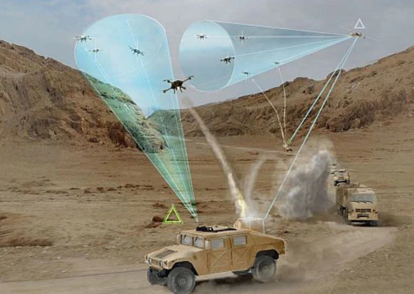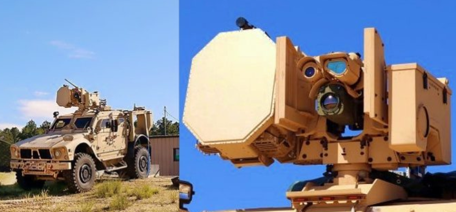Originally appeared at ZeroHedge
A new report from the U.S. Army Combat Capabilities Development Command states that the Ballistic Low Altitude Drone Engagement (BLADE) prototype is ready to conduct further trials to protect high-value military assets from small unmanned aerial system attacks.
The BLADE is a dome of protection that uses a set of systems to combat against small drone attacks, can be mounted on various tactical vehicles providing troops and military assets with close-range protection.
The BLADE is integrated with the Common Remotely Operated Weapon Station (CROWS) and uses advanced fire control and precision targeting enablers to detect, track, and defeat small drones. CROWS includes a sensor suite and fire control software that allow soldiers to engage targets remotely. CROWS tracks targets with several sensors, including a camera and thermal optics. The new system can be stationary or mounted on most tactical vehicles.
Once the BLADE identifies and locks onto a target, it will fire an electronic attack on small incoming drones with short bursts of fire.
A successful test occurred earlier this summer at Fort Dix, New Jersey, proved the new system is ready for additional, more rugged field tests against drone swarms.
BLADE is expected to be mounted on M1 Abrams tanks, M2 Bradley infantry fighting vehicles, and Stryker wheeled armored fighting vehicles.
The Army said BLADE is at “final Level 6 technology readiness demonstration for the BLADE system will be conducted later this year.”
“Technology readiness levels refer to the maturity of a technology and range from Level 1 to Level 9. Level 6 is a model or prototype that has been tested in an operational environment, such as an aircraft or vehicle. Once we get a technology to the point where it can transition out of CCDC, which is typically Level 6, it transitions to program managers and program executive offices who make the technology a program of record, which means funding has been approved so the program can move forward.”
The proliferation of small drones on the modern battlefield, especially in Syria, and more recently, the Saudi Aramco drone/cruise missile attack over the weekend, have allowed terrorist organizations to exploit defense gaps in lower altitude air space.
The first instance of where small drone attacks became very alarming was in Syria early last year. When terrorists strapped bombs to a swarm of small drones and attacked the Russian Khmeimim airbase.
In August of last year, a drone packed with explosives detonate
https://twitter.com/XHNews/status/1025939309549903872?ref_src=twsrc%5Etfw
Earlier this year, Houthi rebels used an explosive-packed drone to target Yemen’s military leaders at an army parade.
https://twitter.com/CarlZha/status/1083362049491533826?ref_src=twsrc%5Etfw
Then over the weekend, a highly disruptive small drone attack, claimed by the Houthi rebels, knocked out 5.7 million barrels per day (bpd) of total Saudi oil output, which equates to about half of their production – causing oil prices across the world to spike.
https://twitter.com/RT_com/status/1172771965242728448?ref_src=twsrc%5Etfw
All of these incidents prove that the rapid proliferation of small drones on the modern battlefields and across the world have created a significant defense gap that companies, corporations, and militaries are rushing to fix. The solution could be the BLADE.








After reading this article, or just any US test report, go on to youtube and watch the movie “Pentagon Wars” and you will be flat out laughing.
“Yes we have, but we don’t want to use it” (Anonymous Source) :-D
Fort Dix lmao
I’ll believe it when I see it in action.
Means all of you guys now are finished. No more toy drones with a hand granate attached on Americans. From now on we got you intercepted not only from the ground but also from our Space Command Centre Defense Combate photonic hyper precision plasma interception laser weapon. From all angles!
You are doomed and your economy are in tatters.
I really dont know some important data of system:
– what is range of detection
– how big is area of detection when they grounding one drone from one side (there is only one antenna)
– how much drones they are able to grounding at effective “catch” range of this system at same time
– how much time this system need for grounding simple drone
As is known it looks there is possibility for detection single drone and then youu need to ground it by CROWS system – due to this time it looks like this system is vulnerable to be attacked by another drones which will be possibly undetected or you need tens od humwees with BLADEs at single area for defend single target …… A this scenario Pantsir-S1 looks to be two generation ahead in case of destruction of drones (yes is different system but…..) … I know only simple case when drones come above Hmeim and be able to attack the airbase – that is maybe 99% success ratio for this system and this kind of threat ….. Against Pantsir-S1 looks this supermodern US BLADE system as obsolete costly piece of scrap